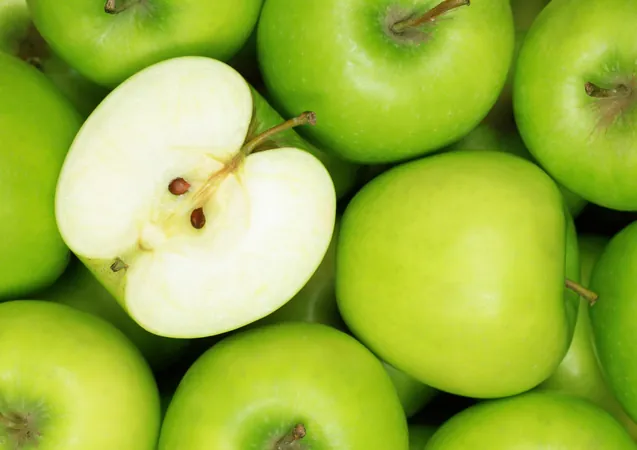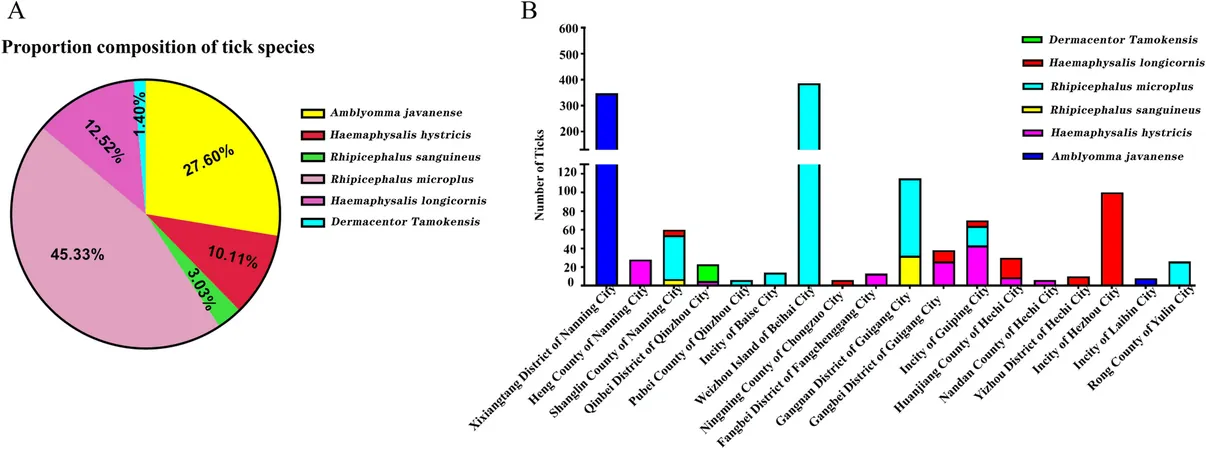
Unlocking the Secrets of Apple Genetics: A Sweet Future Awaits!
2025-04-23
Author: Mei
A Historic Genetic Dive into Apple Lineage
Did you know that your favorite apple varieties, from the crisp Honeycrisp to the zesty Granny Smith, have a rich evolutionary history that spans tens of millions of years? New groundbreaking research is peeling back the layers of this history, offering insights that could revolutionize apple cultivation!
The Genetic Atlas of Apples: What We Discovered
In an exciting study, scientists have unveiled a comprehensive genetic atlas for 30 species within the Malus genus, which includes our beloved apples. This vital research, led by a team from Pennsylvania State University, aims to help breeders develop tastier and more resilient fruit.
"Despite apples being one of the most significant fruit crops, detailed studies on their genetic evolution have been sparse," states Hong Ma, a leading expert in plant evolution. The research fills this gap, revealing how these apple varieties emerged, survived ice ages, and even swapped genes!
Tracing Apples Back to Their Ancestors
To construct an apple family tree, researchers sequenced high-quality genomes from an array of species, including the iconic Golden Delicious. They discovered that apples likely originated in Asia around 56 million years ago, rapidly spreading and evolving through hybridization and gene duplication.
Understanding the Complex Evolution of Apples
This evolutionary journey has not been straightforward! The team found that these genomic duplications and hybridization events resemble a complicated scrapbook, making it challenging to organize the familial ties between species. However, the high-quality genome data allowed for a deeper understanding of Malus's complex lineage.
Diving Deeper: The Pan-Genome Innovation
The researchers took an innovative approach by creating a pan-genome—an all-encompassing reference highlighting both shared genes and unique genetic features across the 30 species. This detailed analysis uncovered critical gene variations, leading directly to findings such as apple scab resistance.
Genetic Advantages Lost in Domestication?
A striking discovery was the identification of genes associated with cold tolerance and pathogen resistance, prevalent in wild apples but often bred out of the commercial varieties. This raises a provocative question: in our quest for sweeter fruit, have we sacrificed hardiness?
The Road Ahead for Apple Breeding
With this new genetic map, apple breeders may be poised for a transformative change! Normally, finding a perfect apple cross can take years of painstaking orchard testing. However, knowing the genetic landscape ahead of time could allow for early predictions of desirable traits in a lab setting.
Conserving the Future of Apples
As climate change presents new challenges for agriculture, maintaining genetic diversity in apple species becomes crucial. Many traits for drought tolerance and pest resistance are found in remote wild apple species yet to be tapped by breeders. Protecting these species could be vital for our agricultural future.
What’s Next in Apple Genetics?
Ma and his colleagues are not stopping here. Plans are underway to refine their pan-genome by including more Malus species and understanding how each genetic variation affects traits like flavor and growth patterns. They aim to share their findings with crop researchers worldwide!
This intricate journey of the humble apple over 56 million years now has the potential to yield a more robust and flavorful harvest, benefiting both growers and consumers alike. Stay tuned for the apple revolution!
Want to stay updated? Subscribe for engaging articles and insights on the sweet future of fruit!





 Brasil (PT)
Brasil (PT)
 Canada (EN)
Canada (EN)
 Chile (ES)
Chile (ES)
 Česko (CS)
Česko (CS)
 대한민국 (KO)
대한민국 (KO)
 España (ES)
España (ES)
 France (FR)
France (FR)
 Hong Kong (EN)
Hong Kong (EN)
 Italia (IT)
Italia (IT)
 日本 (JA)
日本 (JA)
 Magyarország (HU)
Magyarország (HU)
 Norge (NO)
Norge (NO)
 Polska (PL)
Polska (PL)
 Schweiz (DE)
Schweiz (DE)
 Singapore (EN)
Singapore (EN)
 Sverige (SV)
Sverige (SV)
 Suomi (FI)
Suomi (FI)
 Türkiye (TR)
Türkiye (TR)
 الإمارات العربية المتحدة (AR)
الإمارات العربية المتحدة (AR)